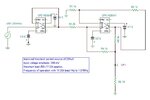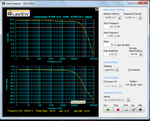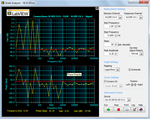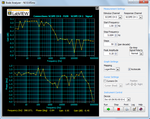anushaas
Member level 5
Hi
The following circuit was simulated using Tina 9 and the hardware implementation for the same was done on an NI Elvis II+ board

The frequency response of the circuit with load resistance R6 as 10k on simulation gave a -3dB gain at 7.8MHz as shown below

However the same on implementation gave a -3dB gain at 630.957kHz approx.The response obtained is as shown below

The response (simulation and hardware) for R6 as 10Ohm is as shown below:


I understand that practical implementation will involve parasitic capacitances in the circuit but will the variation be this much?
The following circuit was simulated using Tina 9 and the hardware implementation for the same was done on an NI Elvis II+ board

The frequency response of the circuit with load resistance R6 as 10k on simulation gave a -3dB gain at 7.8MHz as shown below

However the same on implementation gave a -3dB gain at 630.957kHz approx.The response obtained is as shown below

The response (simulation and hardware) for R6 as 10Ohm is as shown below:


I understand that practical implementation will involve parasitic capacitances in the circuit but will the variation be this much?


